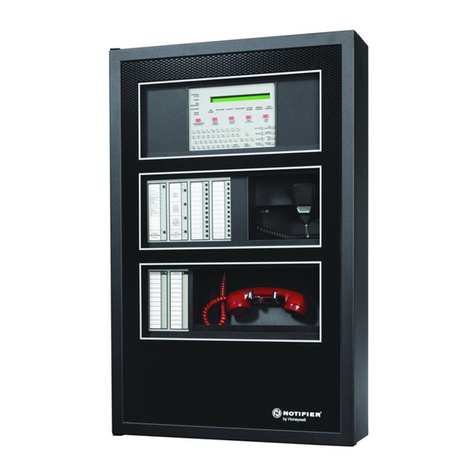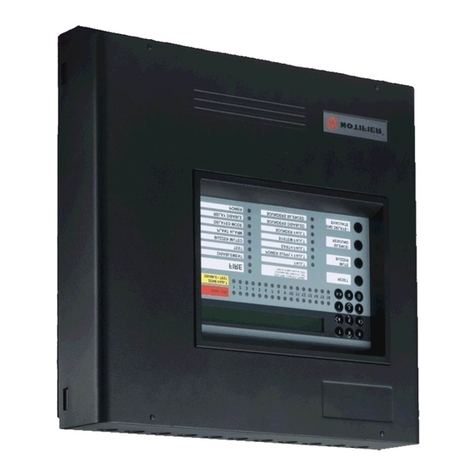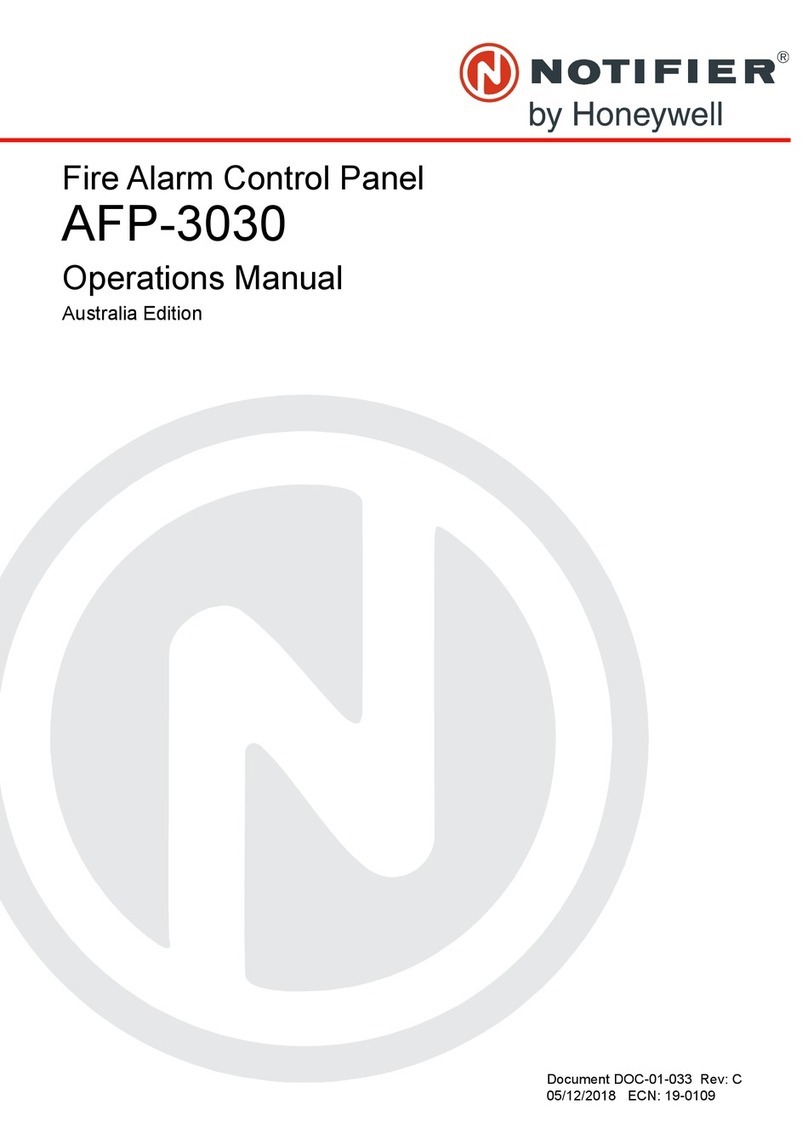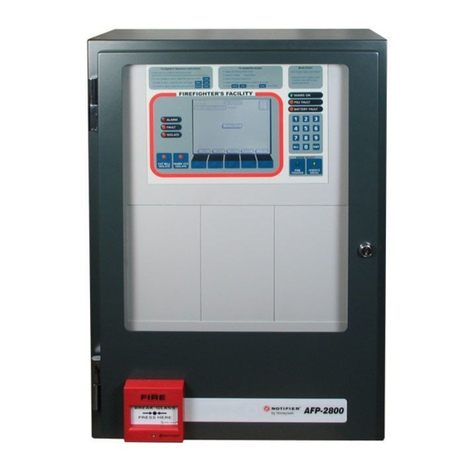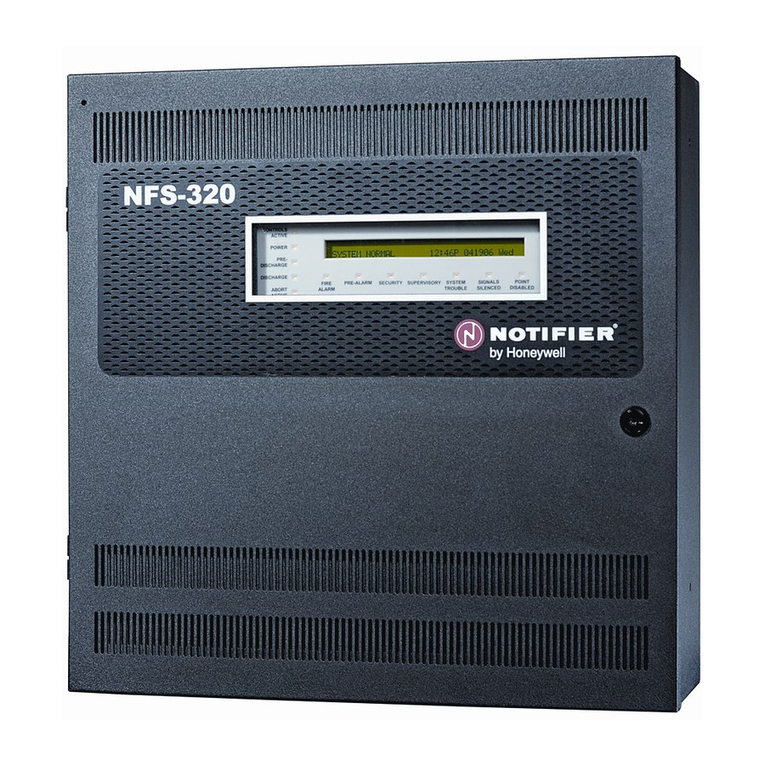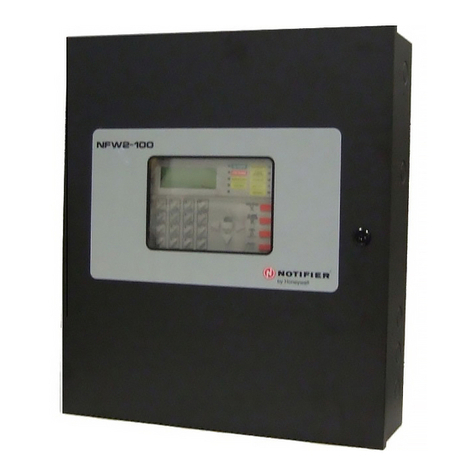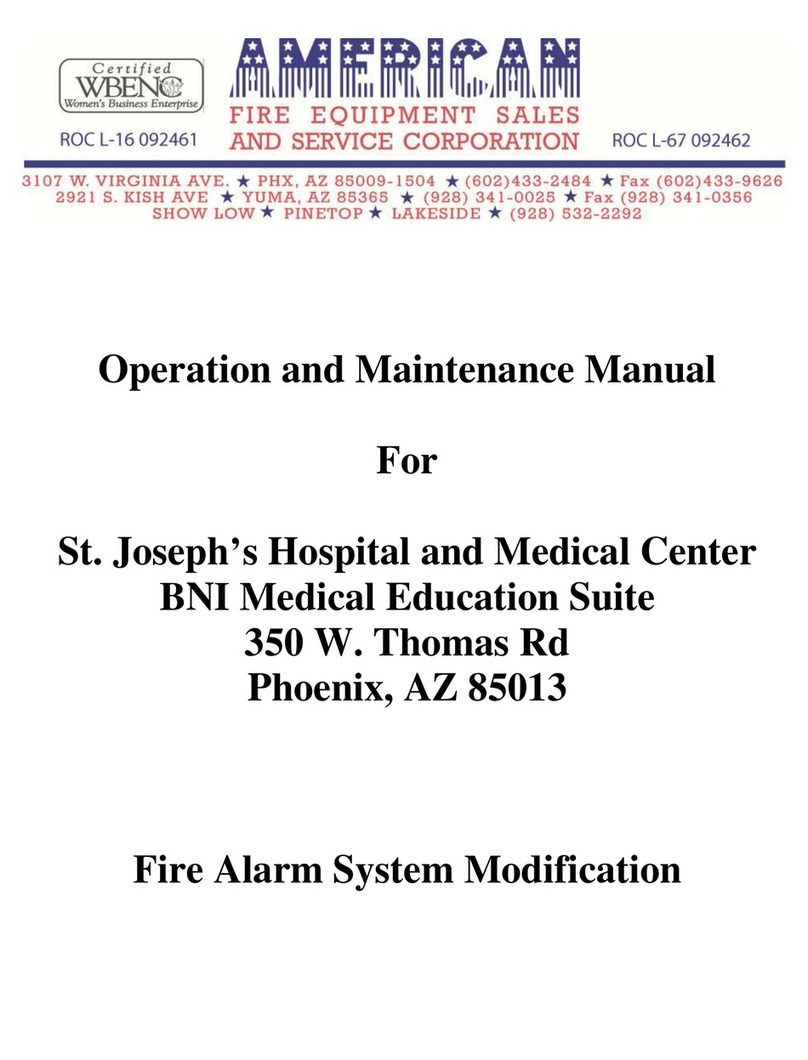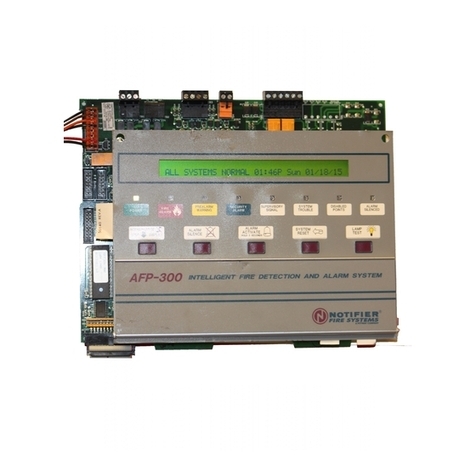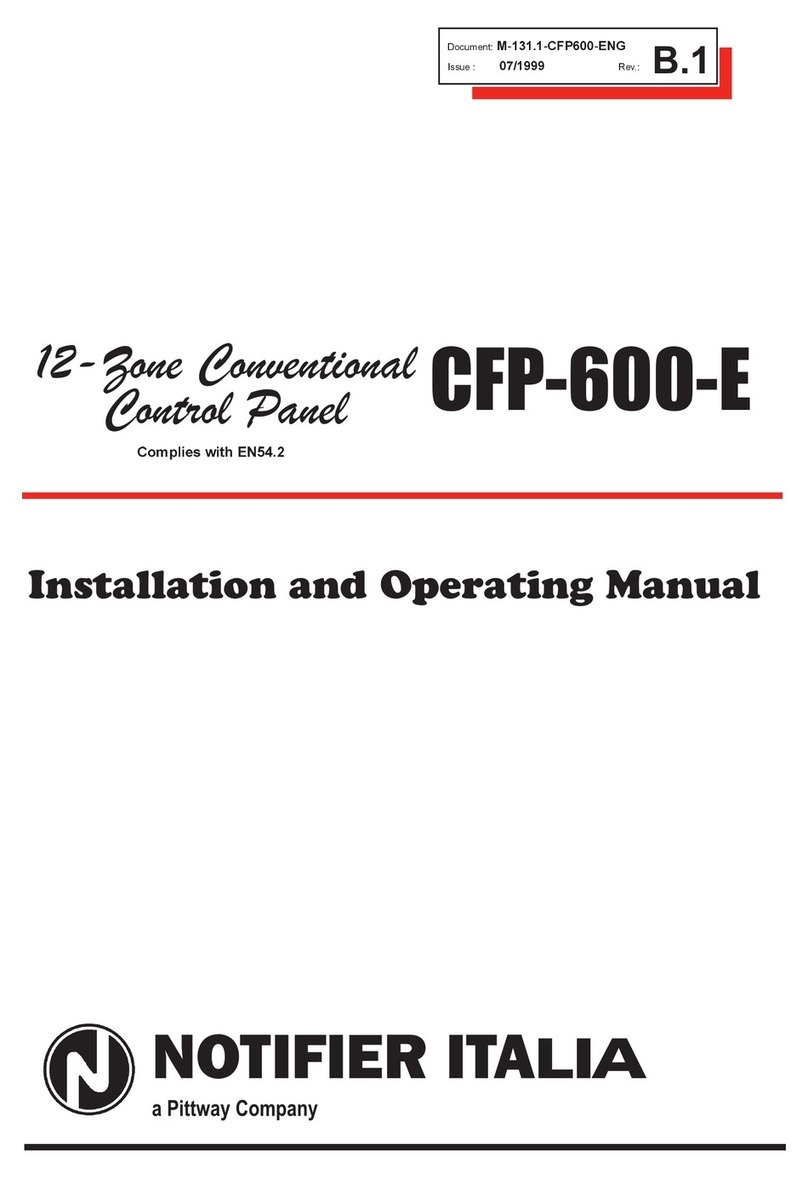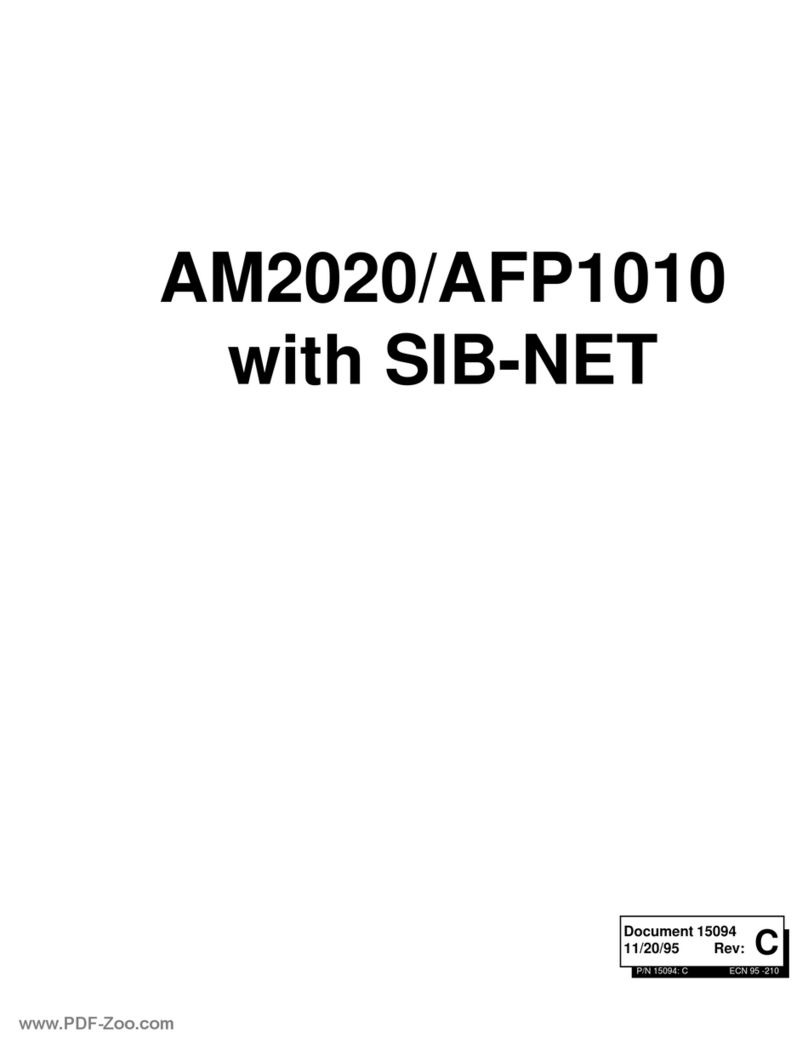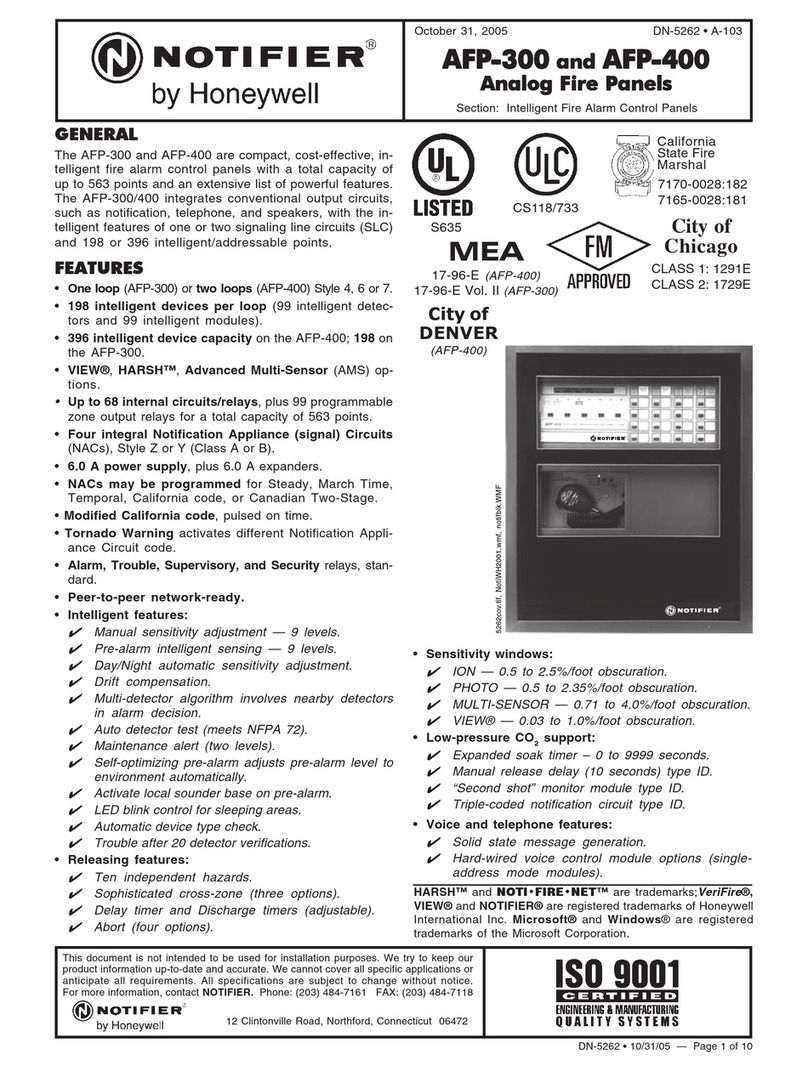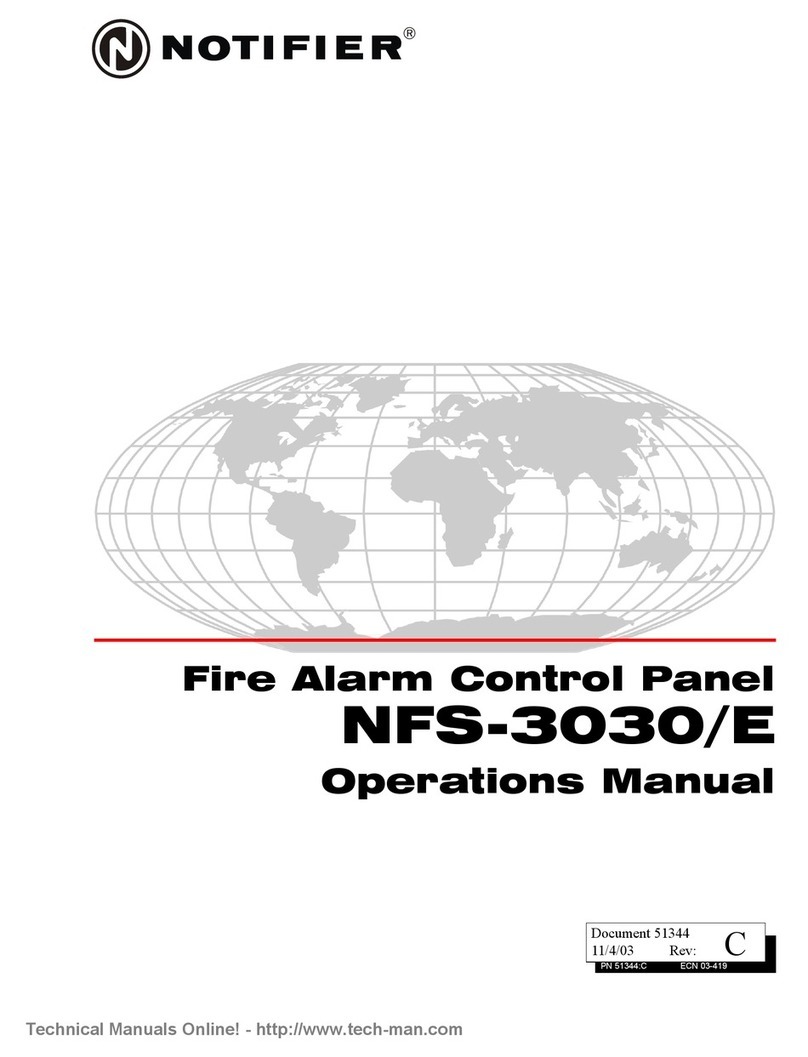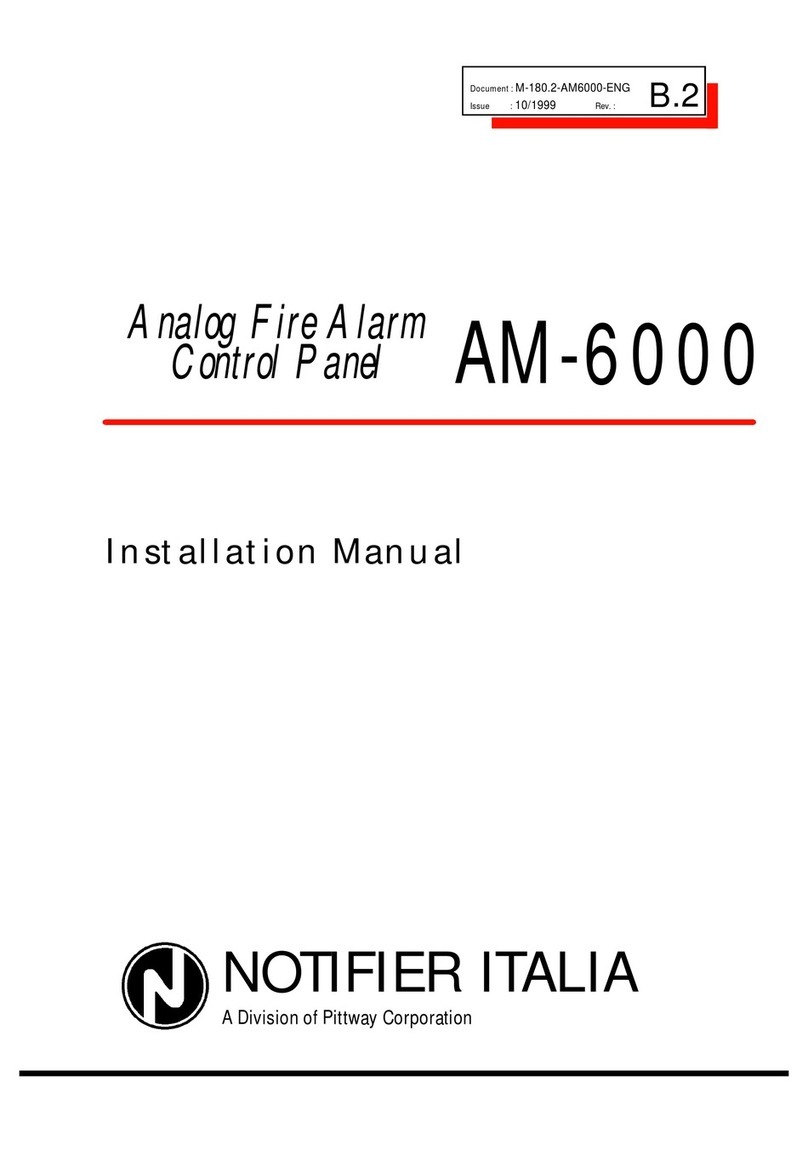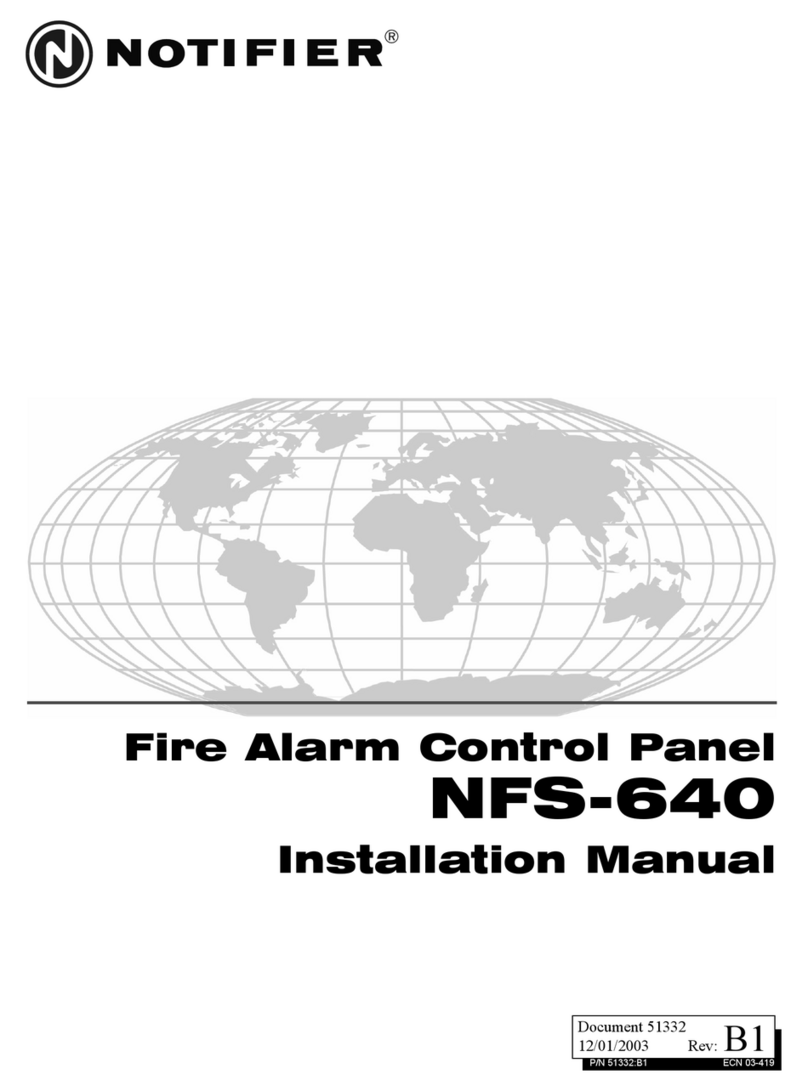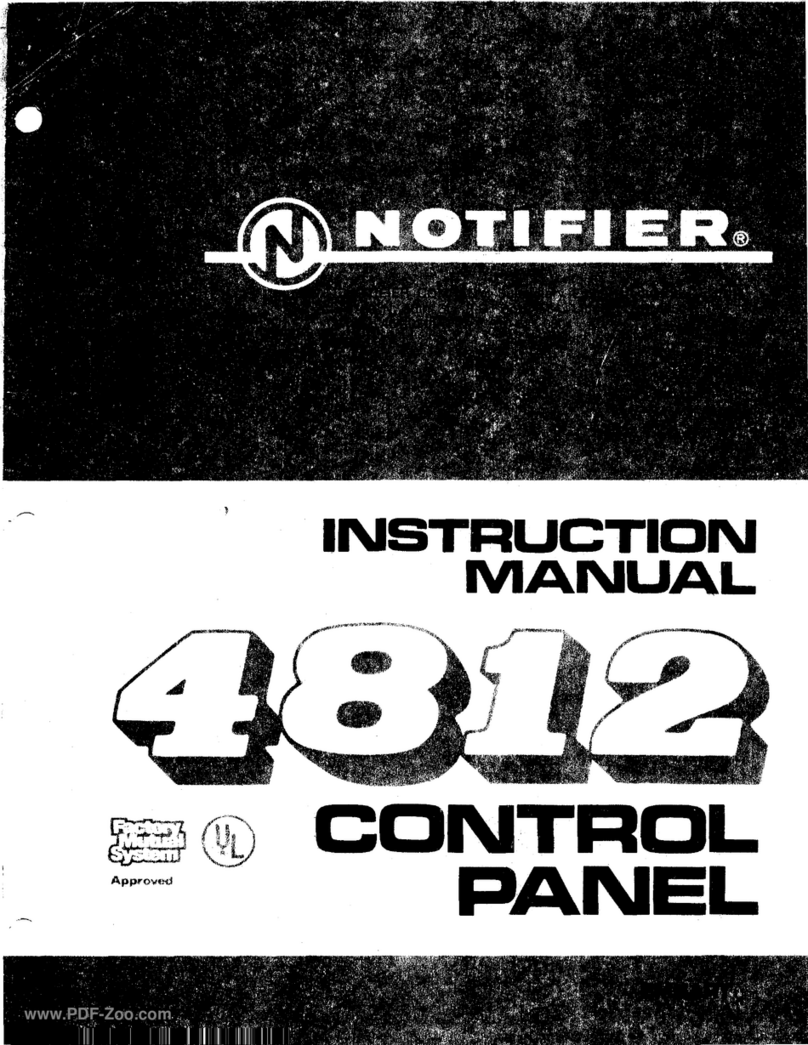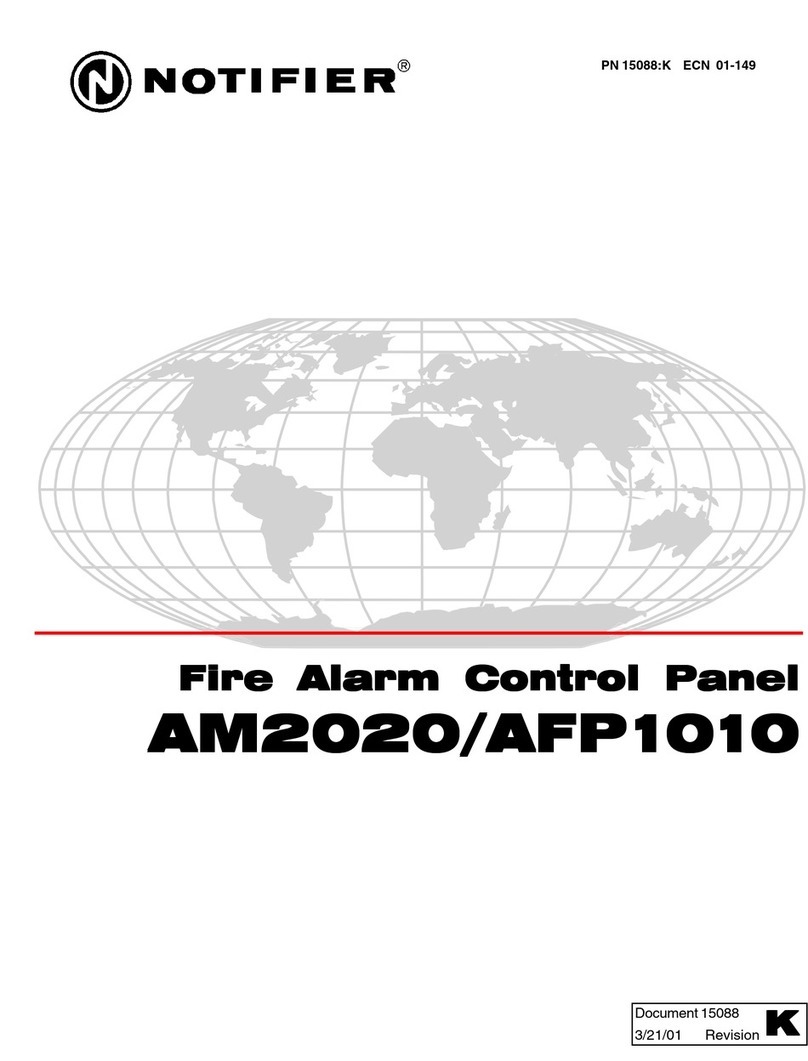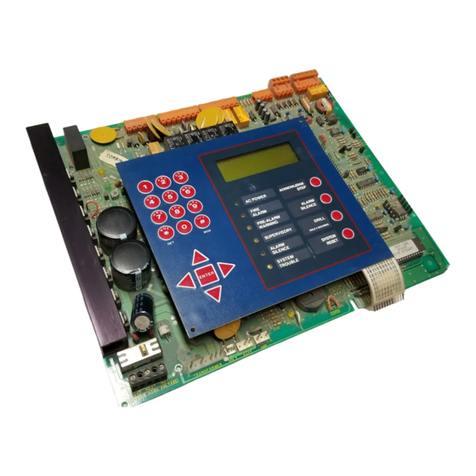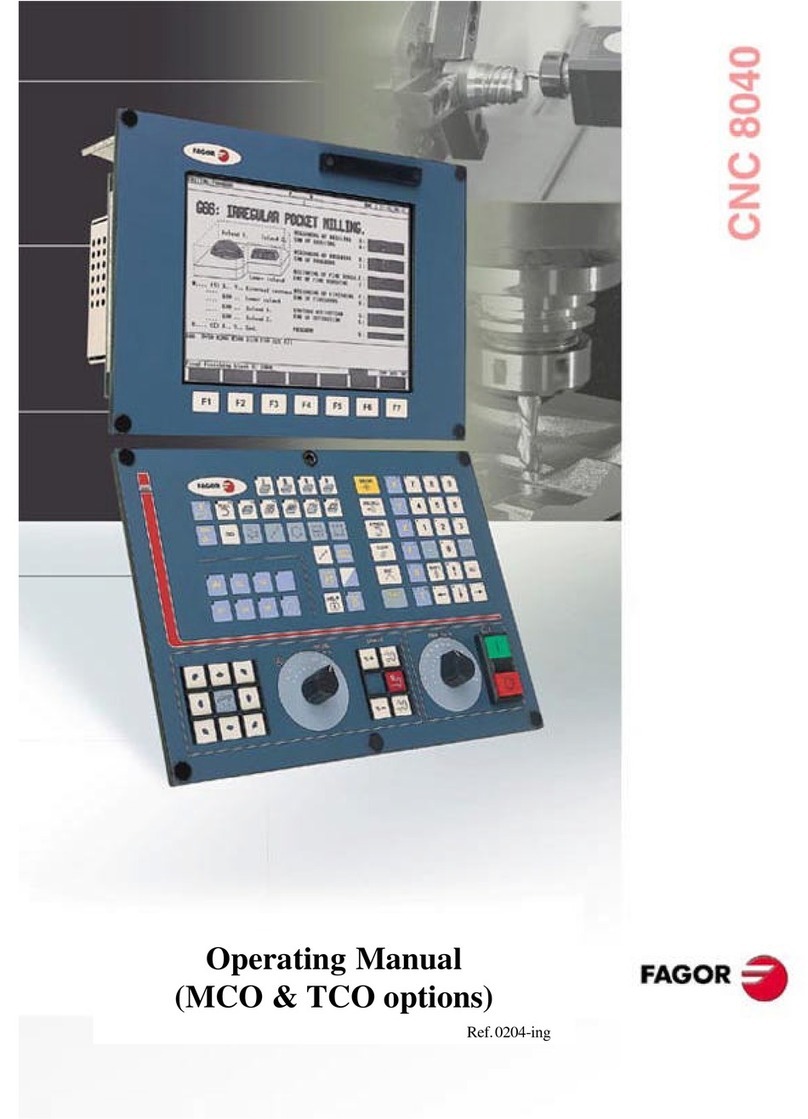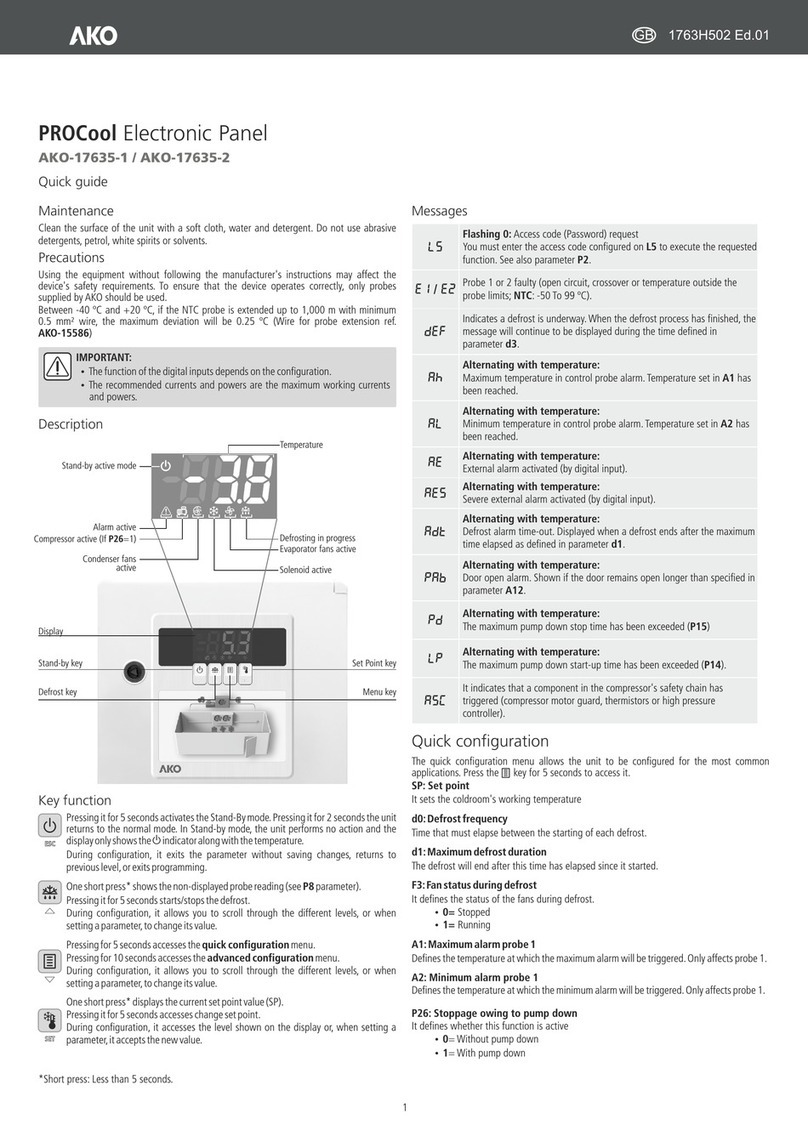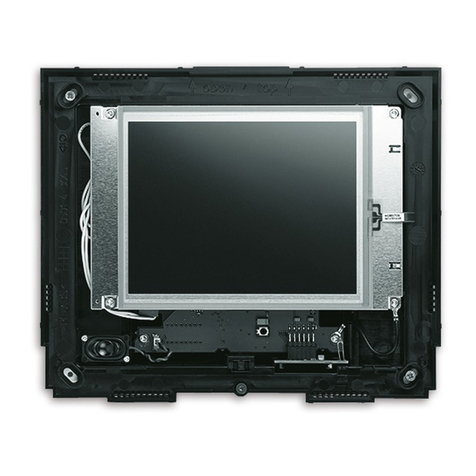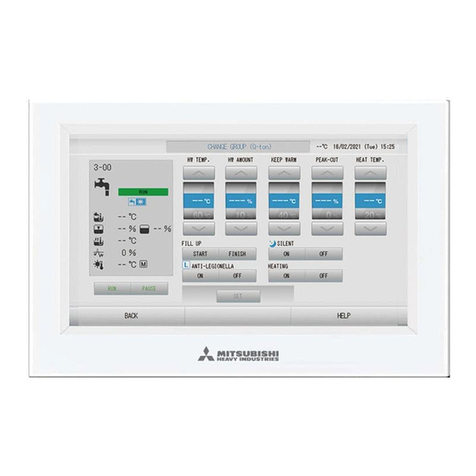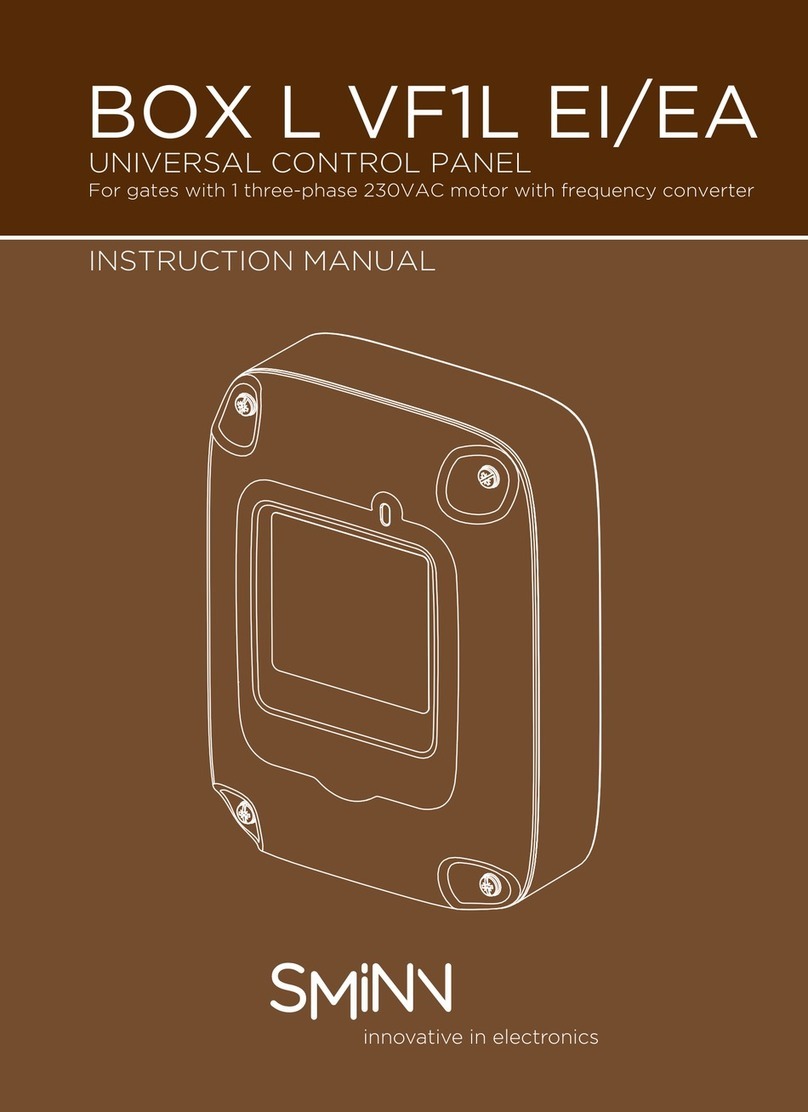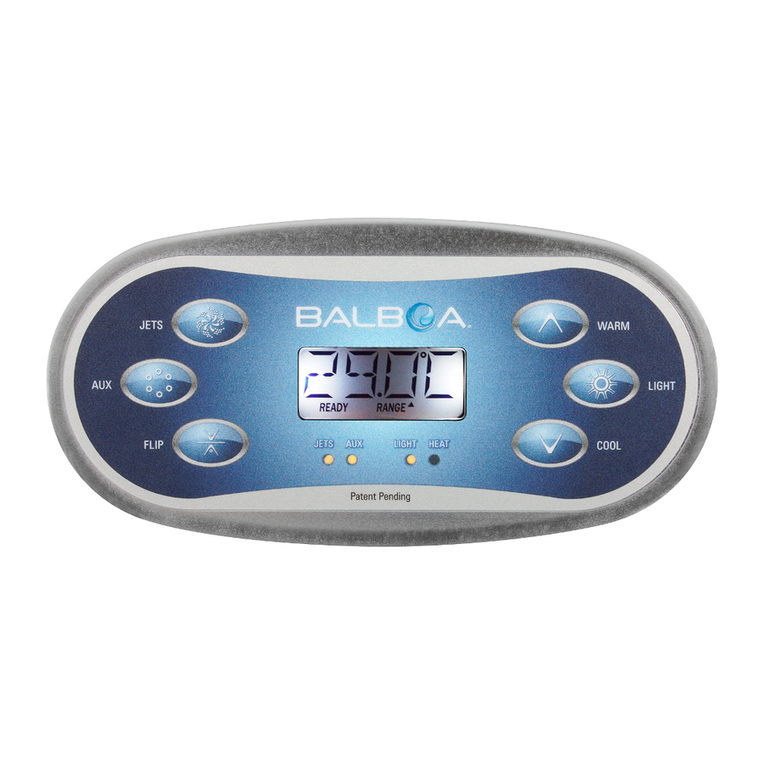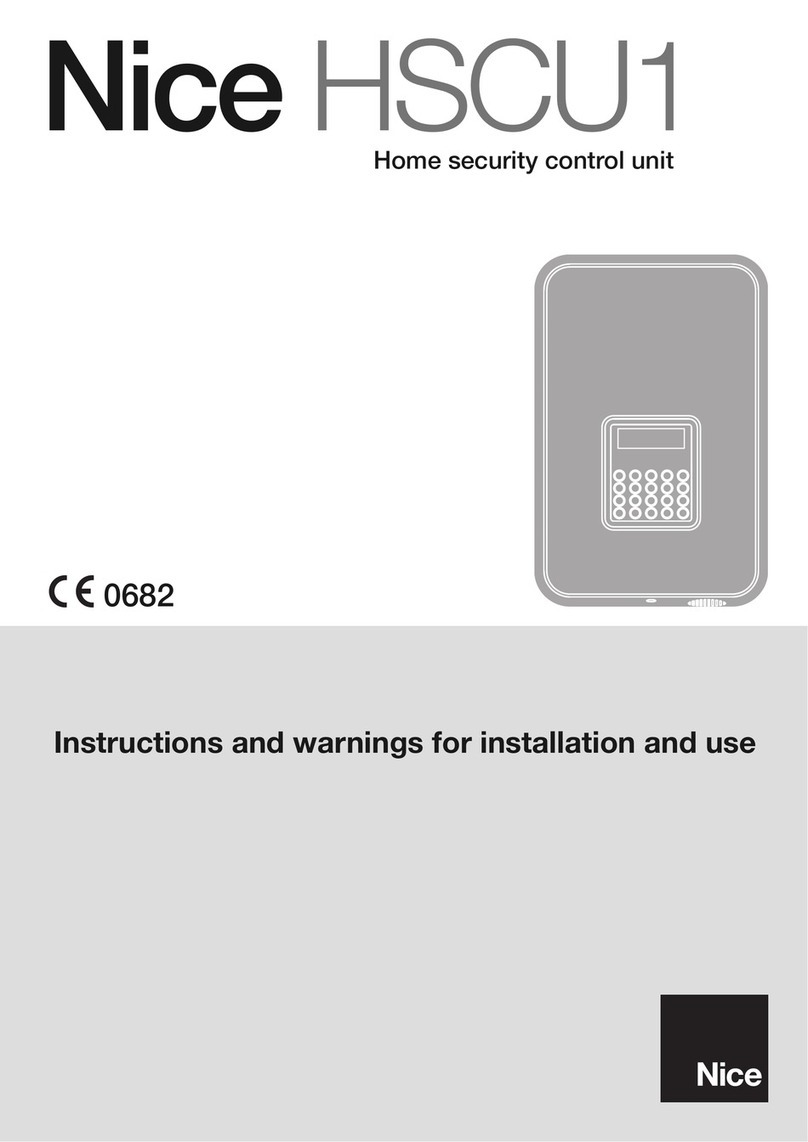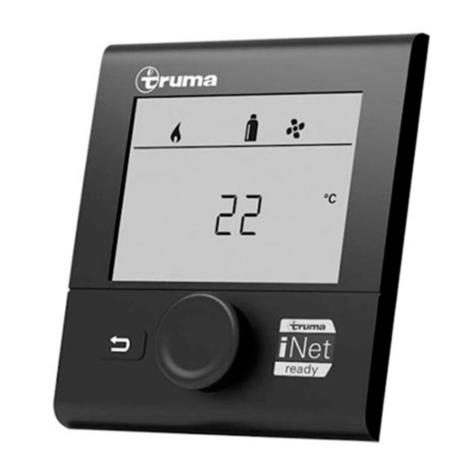
WARNING -
Several different sources of power can be connected to
this fire alarm control panel.
Disconnect all sources of power before
servicing. Controlunitandassociatedequipmentmaybedamagedby
removing and/or inserting cards, modules, or interconnecting cables
whiletheunitisenergized. Donotattempttoinstall,service,oroperate
thisunituntilthismanualisreadandunderstood.
CAUTION -
System Reacceptance Test after Software Changes:
To
ensureproper system operation, thisproduct must be testedin accor-
dancewithNFPA72-1993Chapter7afteranyprogrammingoperation
or change in site-specific software. Reacceptance testing is required
afteranychange,additionordeletionofsystemcomponents,orafterany
modification,repair oradjustmenttosystem hardwareorwiring.
All components, circuits, system operations, or software functions
knowntobe affectedby achange mustbe100%tested. Inaddition,to
ensurethatotheroperationsarenotinadvertentlyaffected,atleast10%
ofinitiatingdevicesthat arenot directlyaffectedby thechange, uptoa
maximumof50devices,mustalsobetestedandpropersystemopera-
tionverified.
This system meets NFPA requirements for operation at 0-49OC
and at a relative humidity of 85% RH (non-condensing) @ 30OC.
However, the useful life of the system's standby batteries and the
electronic components may be adversely affected by extreme tem-
peraturerangesandhumidity. Therefore,itisrecommendedthatthis
system and its peripherals be installed in an environment with a
nominal room temperature of 60-80OF.
Verify that wire sizes are adequate for all initiating and indicating
deviceloops. Most devicescannottoleratemore thana10%I.R. drop
fromthespecifieddevicevoltage.
InstallationPrecautionsAdherencetothefollowing will aid in problem-free installation with long-term reliability:
Like all solid state electronic devices, this system may operate
erratically or can be damaged when subjected to lightning induced
transients. Although no system is completely immune from lightning
transientsandinterferences,propergroundingwillreducesusceptibility.
Overhead or outside aerial wiring is not recommended, due to an
increased susceptibility to nearby lightning strikes.
Consult with the
Technical Services Department if any problems are anticipated or
encountered.
Disconnect AC power and batteries prior to removing or inserting
circuit boards. Failure to do so can damage circuits.
Removeallelectronicassembliespriortoanydrilling,filing,reaming,
orpunchingoftheenclosure. Whenpossible,makeallcableentriesfrom
thesides or rear. Before making modifications, verify that they will not
interferewithbattery,transformer,andprintedcircuitboardlocation.
Do not tighten screw terminals more than 9 in-lbs. Over tightening
may damage threads, resulting in reduced terminal contact pressure
anddifficultywithscrewterminalremoval.
This system contains static-sensitive components. Always ground
yourself with a proper wrist strap before handling any circuits so that
static charges are removed from the body. Use static suppressive
packagingto protect electronicassembliesremovedfrom the unit.
Follow the instructions in the installation, operating, and program-
mingmanuals. Theseinstructionsmustbefollowedtoavoiddamageto
the control panel and associated equipment. FACP operation and
reliabilitydependuponproperinstallation.
PRECAULG.PM5 11/02/95
Anautomaticfirealarmsystem-typicallymadeupofsmokedetectors,
heatdetectors,manualpullstations,audiblewarningdevices,andafire
alarmcontrolwithremotenotificationcapabilitycanprovideearlywarn-
ing of a developing fire. Such a system, however, does not assure
protection against property damage or loss of life resulting from a fire.
Any fire alarm system may fail for a variety of reasons:
Smoke detectors may not sense fire where smoke cannot reach the
detectorssuch as in chimneys,inwalls,or roofs, or on theotherside of
closed doors. Smoke detectors also may not sense a fire on another
levelorfloorofabuilding. Asecondfloordetector,forexample,maynot
sense a first floor or basement fire. Furthermore, all types of smoke
detectors-bothionizationandphotoelectrictypes,havesensinglimita-
tions. Notypeofsmokedetectorcansenseeverykindoffirecausedby
carelessnessandsafetyhazardslikesmokinginbed,violentexplosions,
escaping gas, improper storage of flammable materials, overloaded
electricalcircuits,childrenplayingwithmatches,orarson.
IMPORTANT!
Smoke detectors must be installed in the same
room as the control panel and in rooms used by the system for the
connection of alarm transmission wiring, communications, signal-
ing, and/or power.
If detectors are not so located, a developing fire
may damage the alarm system, crippling its ability to report a fire.
Fire Alarm System Limitations
While installing a fire alarm system may make lower insurance rates
possible, it is not a substitute for fire insurance!
Audible warning devicessuchas bells maynot alert people if these
devicesarelocated on the other side of closedorpartly open doors or
arelocatedonanotherfloorofabuilding.
Afirealarmsystemwillnotoperatewithoutanyelectricalpower. IfAC
power fails, the system will operate from standby batteries only for a
specified time.
Rate-of-Rise heat detectors may be subject to reduced sensitivity
over time. For this reason, the rate-of-rise feature of each detector
should be tested at least once per year by a qualified fire protection
specialist.
Equipmentusedinthesystemmaynotbetechnicallycompatiblewith
thecontrol. It is essential to use only equipment listed for service with
yourcontrolpanel.
Telephonelinesneededtotransmitalarmsignalsfromapremisetoa
centralmonitoringstationmaybeoutofserviceortemporarilydisabled.
The most common cause of fire alarm malfunctions, however, is
inadequate maintenance. All devices and system wiring should be
tested and maintained by professional fire alarm installers following
writtenprocedures suppliedwitheachdevice. System inspectionand
testingshouldbescheduledmonthlyorasrequiredbyNationaland/or
local fire codes. Adequate written records of all inspections should be
kept.
FCC Warning
WARNING: This equipment generates, uses, and can radiate radio
frequency energy and if not installed and used in accordance with the
instructionmanual,maycauseinterferencetoradiocommunications.Ithas
been tested and found to comply with the limits for class A computing
devicepursuanttoSubpart BofPart 15ofFCCRules,which isdesigned
toprovidereasonableprotectionagainstsuchinterferencewhenoperated
inacommercialenvironment.Operationofthisequipmentinaresidential
areaislikelytocauseinterference,inwhichcasetheuserwillberequired
tocorrectthe interferenceat hisown expense.
Canadian Requirements
This digital apparatus does not exceed the Class A limits for radiation
noise emissions from digital apparatus set out in the Radio Interference
RegulationsoftheCanadianDepartmentofCommunications.
Le present appareil numerique n'emet pas de bruits radioelectriques
depassantleslimitesapplicablesauxappareilsnumeriquesdelaclasse
AprescritesdansleReglementsurlebrouillageradioelectriqueedictepar
leministeredesCommunicationsdu Canada.
